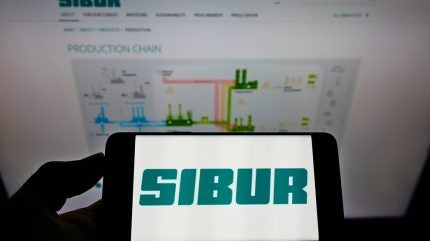Packaging pioneers drive circular economy talks
Packaging pioneers drive circular economy talks Packaging Gateway


Sustainable Development Goals (SDGs) in the Packaging Industry

Key players in the packaging industry converged at the recent Ecumene roundtable in Geneva, Switzerland, to delve into discussions surrounding circular economy initiatives, with a particular focus on addressing plastic pollution and climate impact.
Exploring Innovative Solutions for Plastic Pollution
The gathering served as a platform for industry leaders to explore innovative solutions to combat plastic pollution.
Representatives from SIBUR, Russia’s foremost producer of polymers and rubbers, highlighted its commitment to sustainability through initiatives such as polymer waste recycling.
SIBUR’s Vivilen brand offers a range of polymers containing recycled plastic for various packaging applications, including food (recycled polyethylene terephthalate), non-food (recycled polyolefins), and home decor (recycled polystyrene).
Collaborative Efforts and Technological Advancements
Collaboration was a recurring theme, with industry stakeholders emphasising the importance of collective action in addressing packaging-related environmental challenges.
SIBUR’s collaboration with partners across operational regions to implement plastic collection and recycling projects was particularly noted.
Moreover, discussions centred on technological advancements in recycling processes.
SIBUR’s exploration of chemical recycling, specifically thermolysis, garnered interest for its potential in transforming complex packaging waste into hydrocarbon raw materials, thereby aiding in the production of primary polymers.
Leadership in Sustainability
The packaging industry reaffirmed its commitment to sustainability, with SIBUR leading the charge in climate action.
Recognised for its extensive portfolio of climate projects by the Russian Carbon Unit Registry, SIBUR aims to significantly reduce carbon dioxide (CO₂) emissions by more than six million tons by 2032.
In addition to mitigating its climate impact, polymer waste recycling initiatives championed by SIBUR contribute to reducing greenhouse gas emissions and lessening reliance on primary raw materials.
Through such endeavours, the packaging industry continues to pave the way towards a more sustainable future.
SDGs, Targets, and Indicators
1. SDGs Addressed or Connected to the Issues Highlighted in the Article
- SDG 12: Responsible Consumption and Production
- SDG 13: Climate Action
- SDG 14: Life Below Water
- SDG 15: Life on Land
The article discusses the packaging industry’s efforts to address plastic pollution and climate impact, which are directly related to SDG 12 (Responsible Consumption and Production) and SDG 13 (Climate Action). Additionally, by repurposing plastic bottles and diverting plastic waste from landfills, the industry contributes to SDG 14 (Life Below Water) and SDG 15 (Life on Land).
2. Specific Targets Based on the Article’s Content
- Target 12.4: By 2020, achieve the environmentally sound management of chemicals and all wastes throughout their life cycle, in accordance with agreed international frameworks, and significantly reduce their release to air, water, and soil in order to minimize their adverse impacts on human health and the environment.
- Target 13.3: Improve education, awareness-raising, and human and institutional capacity on climate change mitigation, adaptation, impact reduction, and early warning.
- Target 14.1: By 2025, prevent and significantly reduce marine pollution of all kinds, particularly from land-based activities, including marine debris and nutrient pollution.
- Target 15.1: By 2020, ensure the conservation, restoration, and sustainable use of terrestrial and inland freshwater ecosystems and their services, in particular forests, wetlands, mountains, and drylands, in line with obligations under international agreements.
Based on the article’s content, the targets mentioned above align with the efforts of the packaging industry to manage chemicals and waste, mitigate climate change impacts, prevent marine pollution, and promote the conservation and sustainable use of ecosystems.
3. Indicators Mentioned or Implied in the Article
- Indicator 12.4.1: Number of parties to international multilateral environmental agreements on hazardous waste, hazardous chemicals, and other chemicals that meet their commitments and obligations in transmitting information as required by each relevant agreement.
- Indicator 13.3.1: Number of countries that have integrated mitigation, adaptation, impact reduction, and early warning into primary, secondary, and tertiary curricula.
- Indicator 14.1.1: Index of coastal eutrophication and floating plastic debris density.
- Indicator 15.1.1: Forest area as a proportion of total land area.
The indicators mentioned above can be used to measure progress towards the identified targets. They involve tracking the number of countries meeting their commitments on hazardous waste and chemicals, integrating climate change education into curricula, monitoring coastal eutrophication and plastic debris density, and assessing forest area as a proportion of total land area.
Table: SDGs, Targets, and Indicators
| SDGs | Targets | Indicators |
|---|---|---|
| SDG 12: Responsible Consumption and Production | Target 12.4: By 2020, achieve the environmentally sound management of chemicals and all wastes throughout their life cycle, in accordance with agreed international frameworks, and significantly reduce their release to air, water, and soil in order to minimize their adverse impacts on human health and the environment. | Indicator 12.4.1: Number of parties to international multilateral environmental agreements on hazardous waste, hazardous chemicals, and other chemicals that meet their commitments and obligations in transmitting information as required by each relevant agreement. |
| SDG 13: Climate Action | Target 13.3: Improve education, awareness-raising, and human and institutional capacity on climate change mitigation, adaptation, impact reduction, and early warning. | Indicator 13.3.1: Number of countries that have integrated mitigation, adaptation, impact reduction, and early warning into primary, secondary, and tertiary curricula. |
| SDG 14: Life Below Water | Target 14.1: By 2025, prevent and significantly reduce marine pollution of all kinds, particularly from land-based activities, including marine debris and nutrient pollution. | Indicator 14.1.1: Index of coastal eutrophication and floating plastic debris density. |
| SDG 15: Life on Land | Target 15.1: By 2020, ensure the conservation, restoration, and sustainable use of terrestrial and inland freshwater ecosystems and their services, in particular forests, wetlands, mountains, and drylands, in line with obligations under international agreements. | Indicator 15.1.1: Forest area as a proportion of total land area. |
Behold! This splendid article springs forth from the wellspring of knowledge, shaped by a wondrous proprietary AI technology that delved into a vast ocean of data, illuminating the path towards the Sustainable Development Goals. Remember that all rights are reserved by SDG Investors LLC, empowering us to champion progress together.
Source: packaging-gateway.com

Join us, as fellow seekers of change, on a transformative journey at https://sdgtalks.ai/welcome, where you can become a member and actively contribute to shaping a brighter future.







